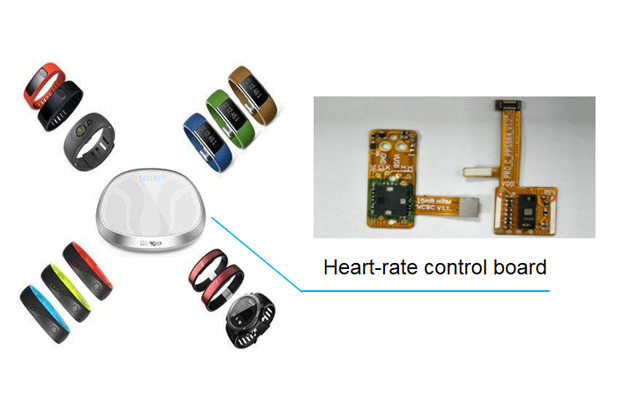
Smart wearable devices according to the different scenarios, the product application has covered fitness, entertainment, sleep, smart home, life, medical, military and other fields, covering the smart watches, fitness tracking devices, smart glasses, smart clothing, medical equipment, headphones, hearing AIDS and a variety of product categories such as digital watches. FPC flexible circuit board has the advantages of thin and flexible, so it meets the requirements of wearable devices for connecting devices, and wearable FPC will become one of the biggest beneficiaries of the flexible circuit board industry.
In recent years, smartwatch, smart bracelet and TWS wireless earphone market among smart wearable devices have increased significantly and have broad prospects. FPC flexible circuit board is one of the main materials in smart wearable devices. It has high stability and reliable connection in the miniaturized space, which can reduce the number of electronic packages and reduce the probability of electronic failure.
With the proliferation of smartphones, miniaturization of sensors, and ease of integration, the number/variety of wearable devices has increased significantly, and some products have reached the level of performance of medical use cases. Medical wearables aim to monitor patients' vital signs to prevent health problems and aid in disease treatment and physical rehabilitation.
Pharmaceutical companies are also starting to embrace medical wearables, with plans to improve research and development through strategic partnerships. For example, Pfizer, UCB Pharma, Apple, Johnson & Johnson, and IBM offer innovative remote monitoring solutions for patients with Parkinson's disease to transform the way clinicians treat the disease. Similarly, smartwatches and wristbands provide health information that can be shared with health insurers and doctors for proper medication guidance.
Medical wearables manufacturers still face some challenges, such as multiple product certifications (CE and FDA certifications). But with the increasing prevalence of chronic diseases such as cardiovascular disease and diabetes (there are about 425 million diabetics worldwide), the need for patient health monitoring is increasing, and the huge advantages of medical wearable devices far outweigh the "red tape" of the medical industry. FPC PCB manufacturers are seeing an increasing number of wearable devices that are at or reaching medical grade, such as Ava bands, Apple watches, Cefaly headbands, Ectosens patches, Omron smartwatches, and Verily smartwatches.
Medical wearable technology still has challenges, but advanced technologies are evolving to address them. The FPC factory has learned that medical wearables are a convergence of two major areas: medical grade devices and consumer grade wearables.

